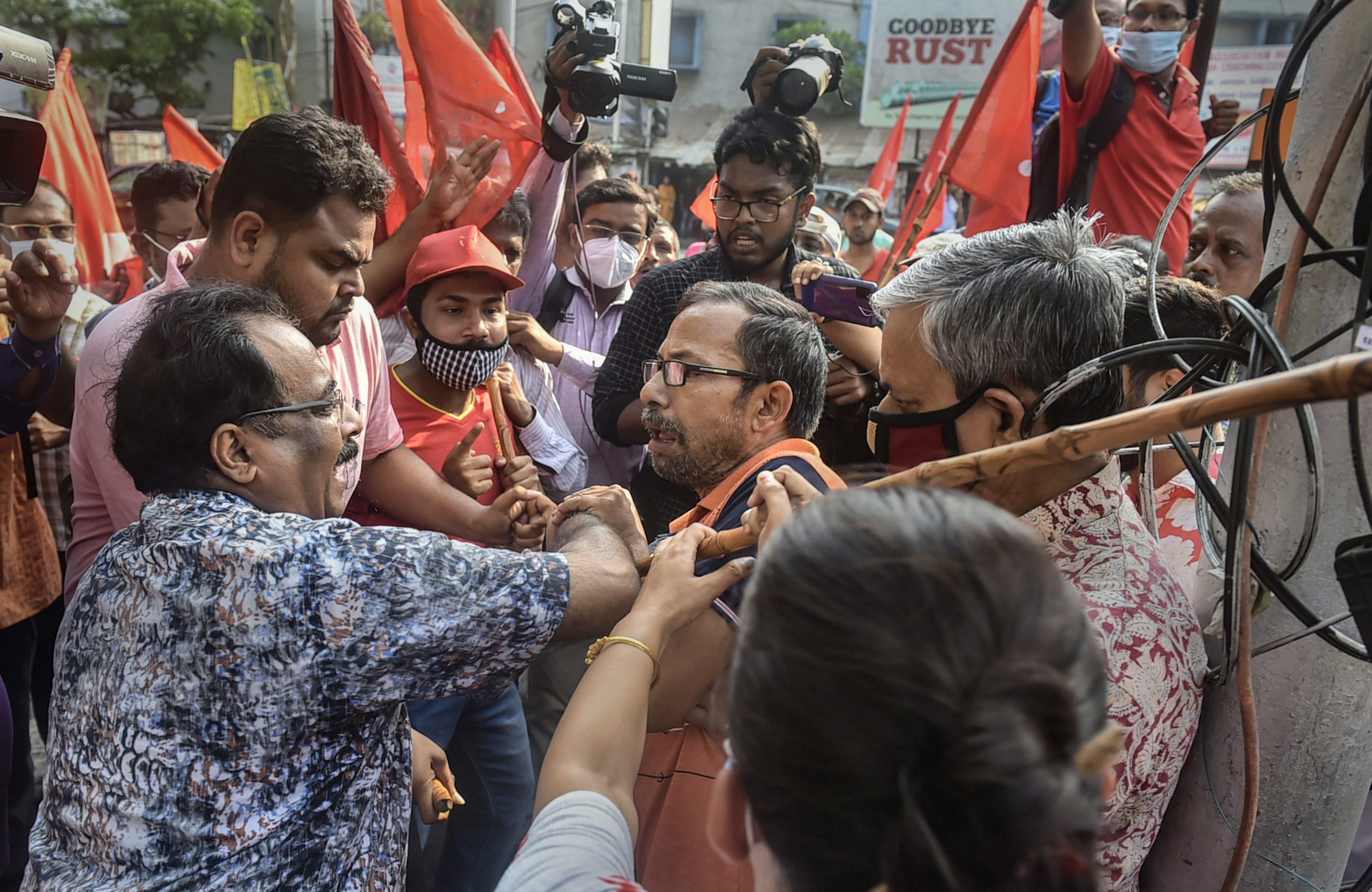India’s first major protest after the conclusion of Assembly elections, the Bharat Bandh strike led to a partial disruption of banking and transport services on Monday. The 48-hour protest entered the second day on Tuesday, and the impact is likely to continue.
The strike has been called by a group of trade unions who have been voicing concern over several government policies, calling them “anti-worker and anti-farmer”.
Also read: Banking services may be disrupted due to nationwide strike on March 28-29
Here are ten points you need to know about the two-day Bharat Bandh strike:
1. The first day of protests in Kerala, Andhra Pradesh, Delhi, Punjab, Haryana, Odisha among others registered a response in several states where transport and banking services took a partial hit.
2. In Kerala, the high court was compelled to issue orders prohibiting the government employees from abstaining from work, calling it illegal.
Also read: Bharat Bandh on March 28 and 29: All you need to know
3. The southern state woke up to empty streets and the state-run KSRTC buses did not operate while taxis, auto-rickshaws and private buses kept away from the roads across the state.
4. Bengal reported protests from the Left-backed agitators who blocked train tracks and also protested on streets. The Mamata Banerjee government had been criticised by the Left for not supporting the strike call against the centre after the state government employees were told to not miss offices.
Also read: US eases COVID-19 travel advisory for India, other countries from ‘Level 3 to ‘Level 1’
5. According to police, some government buses were ransacked by supporters of the strike in north Bengal, especially in Cooch Behar district.
6. Haryana commuters, including students, bore the brunt of the strike on day 1 as state-run buses remained off-roads. Transport services were impacted in Karnal, Panipat, Kurukshetra, Sirsa, Fatehabad, Rohtak, Ambala, Yamunanagar and Kaithal districts.
Also read: Who is Raj Subramaniam, new FedEx CEO after Fred Smith, the founder
7. The protest found support from some lawmakers too in parliament. Rajya Sabha MPs from the Left and Dravida Munnetra Kazhagam (DMK) staged a protest at the Gandhi statue when the Rajya Sabha was adjourned till noon.
8. The strike has been called by the Joint Forum of Central Trade Unions after the provident fund interest rates were slashed in a move that attracted wide criticism.
Also read: Nuclear weapons reserved for existential threats only, Russia reaffirms
9. Apart from 10 central trade unions, independent sectoral federations and workers’ associations are also a part of the protest.
10. The trade unions said workers from coal mining areas of Madhya Pradesh, Jharkhand and Chhattisgarh also took part in the protest.







